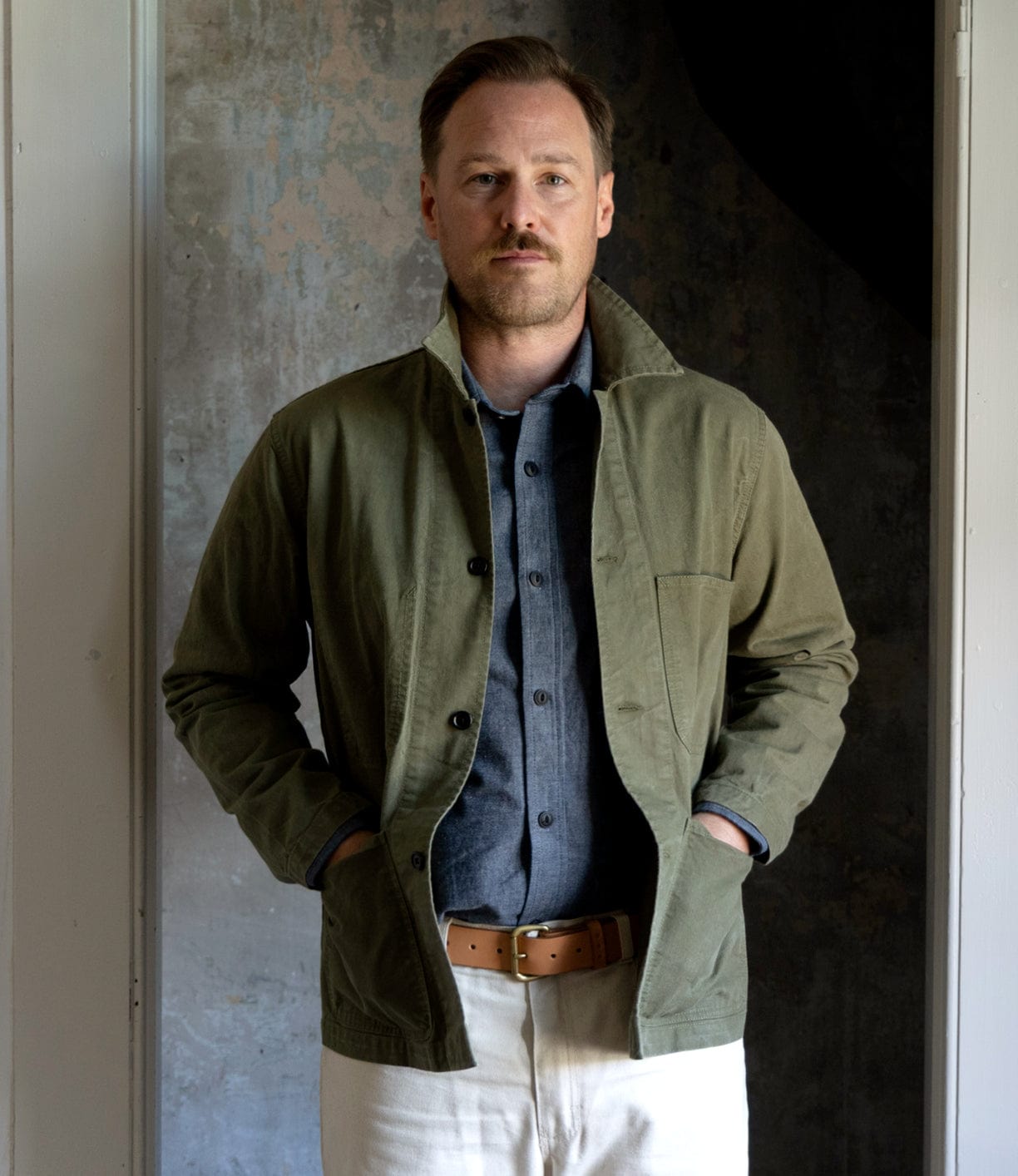
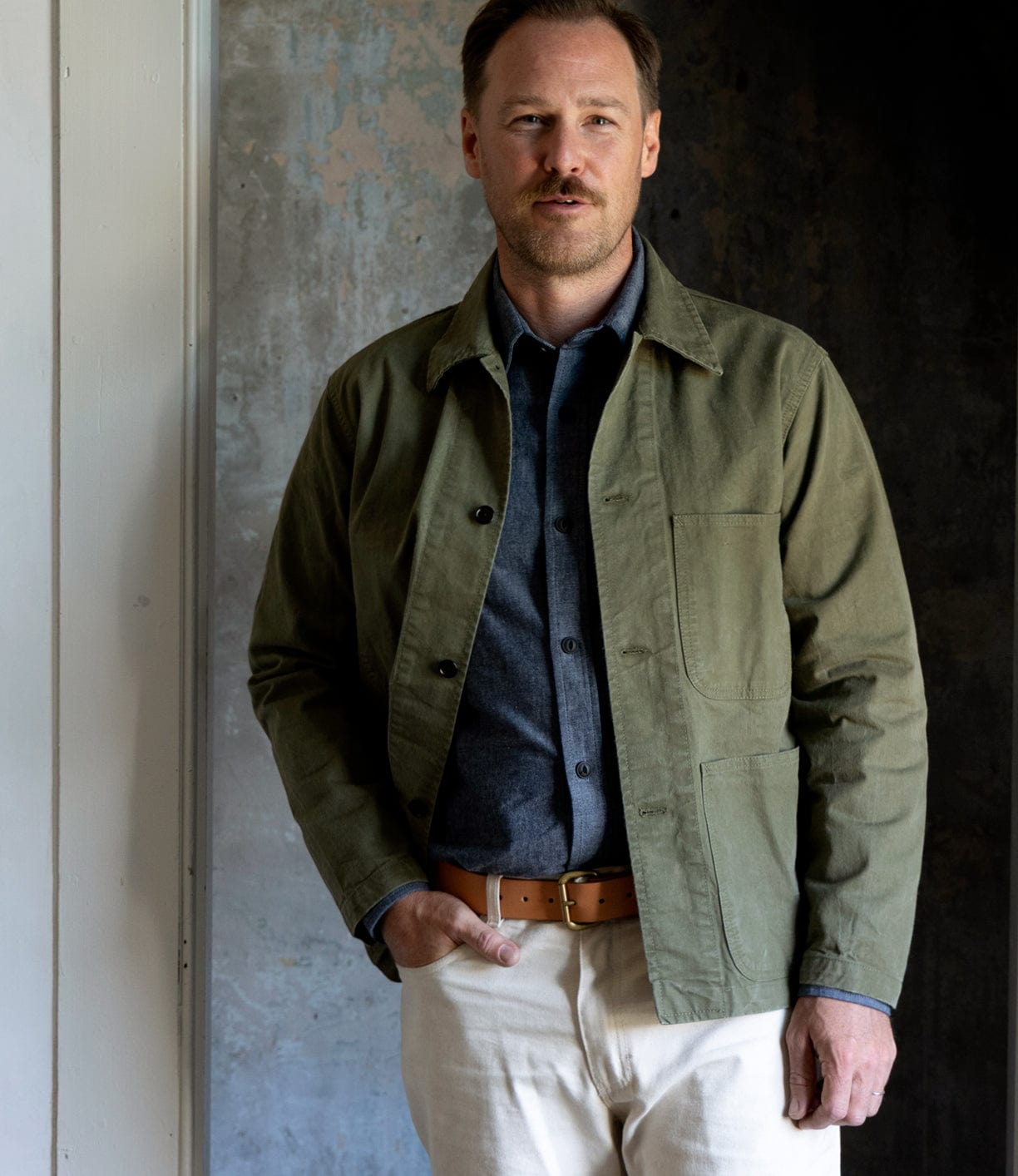
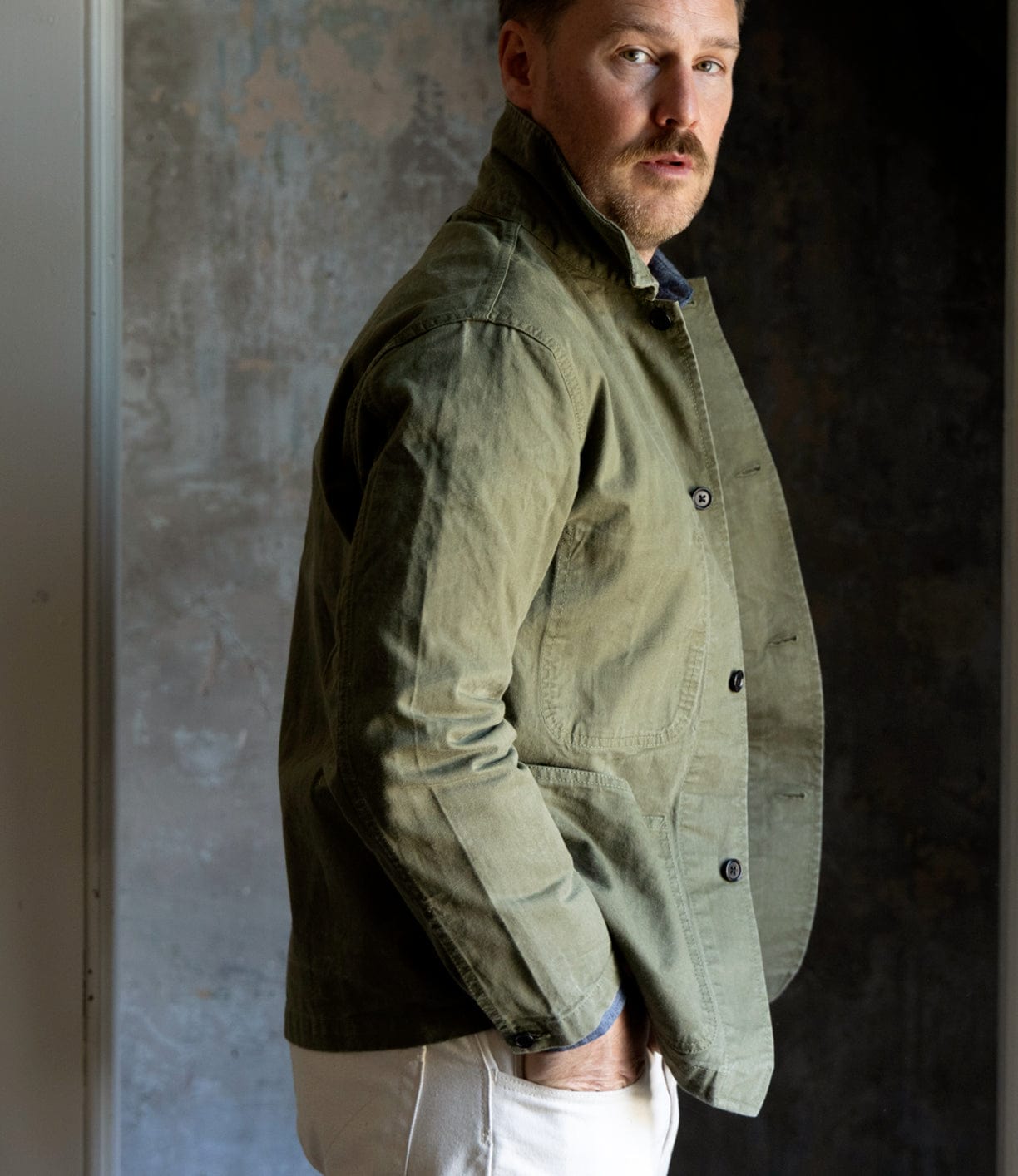
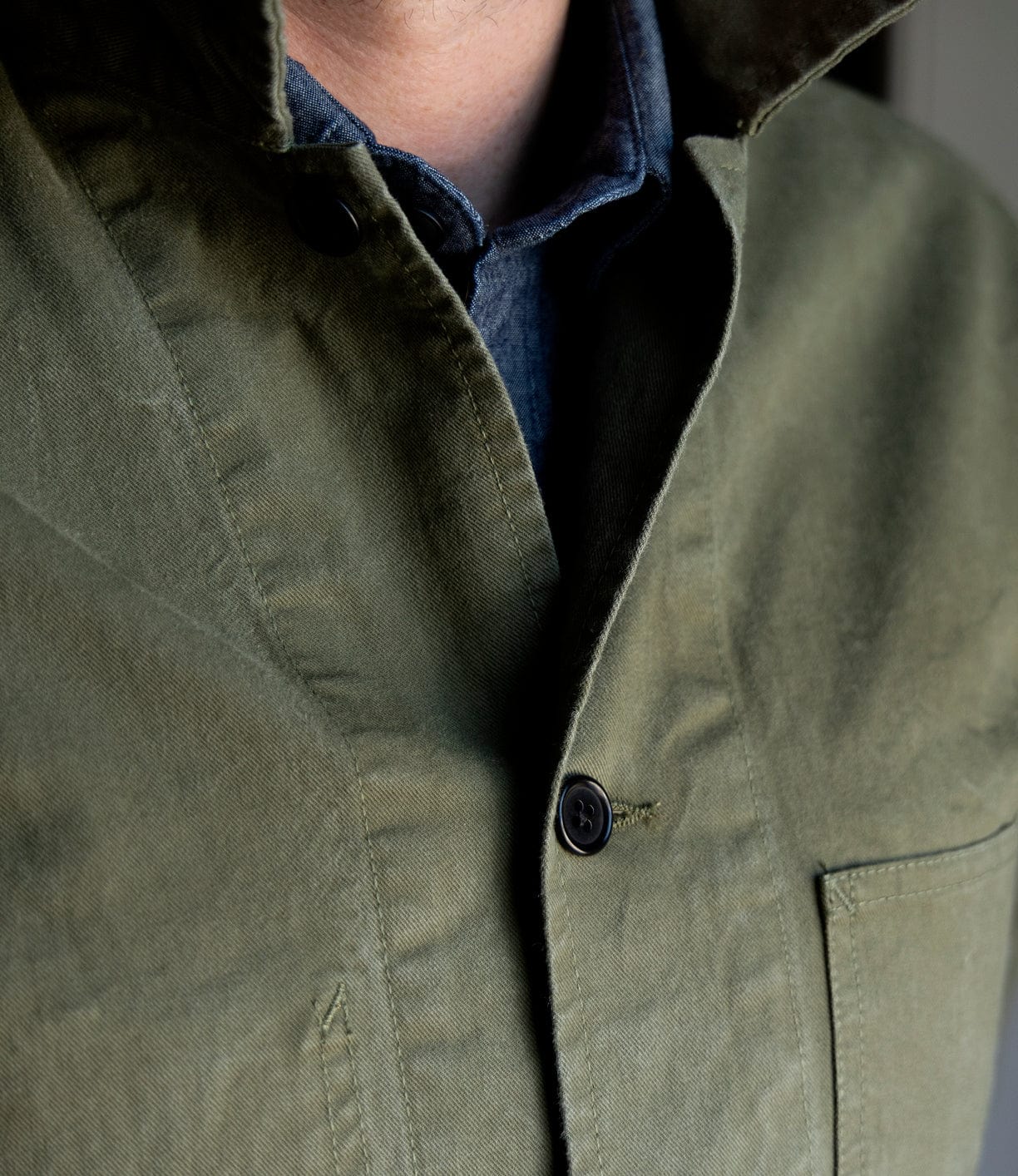
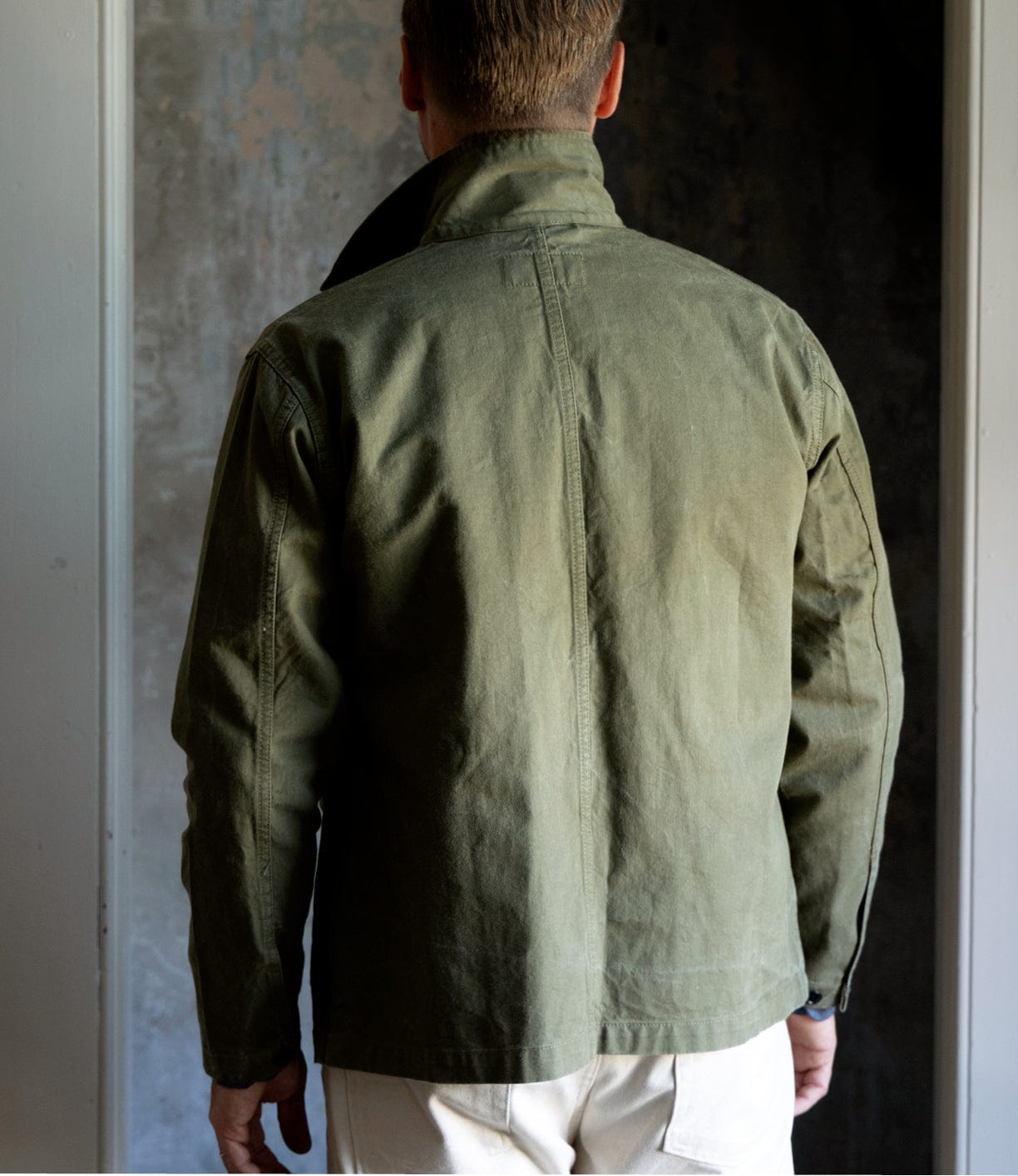
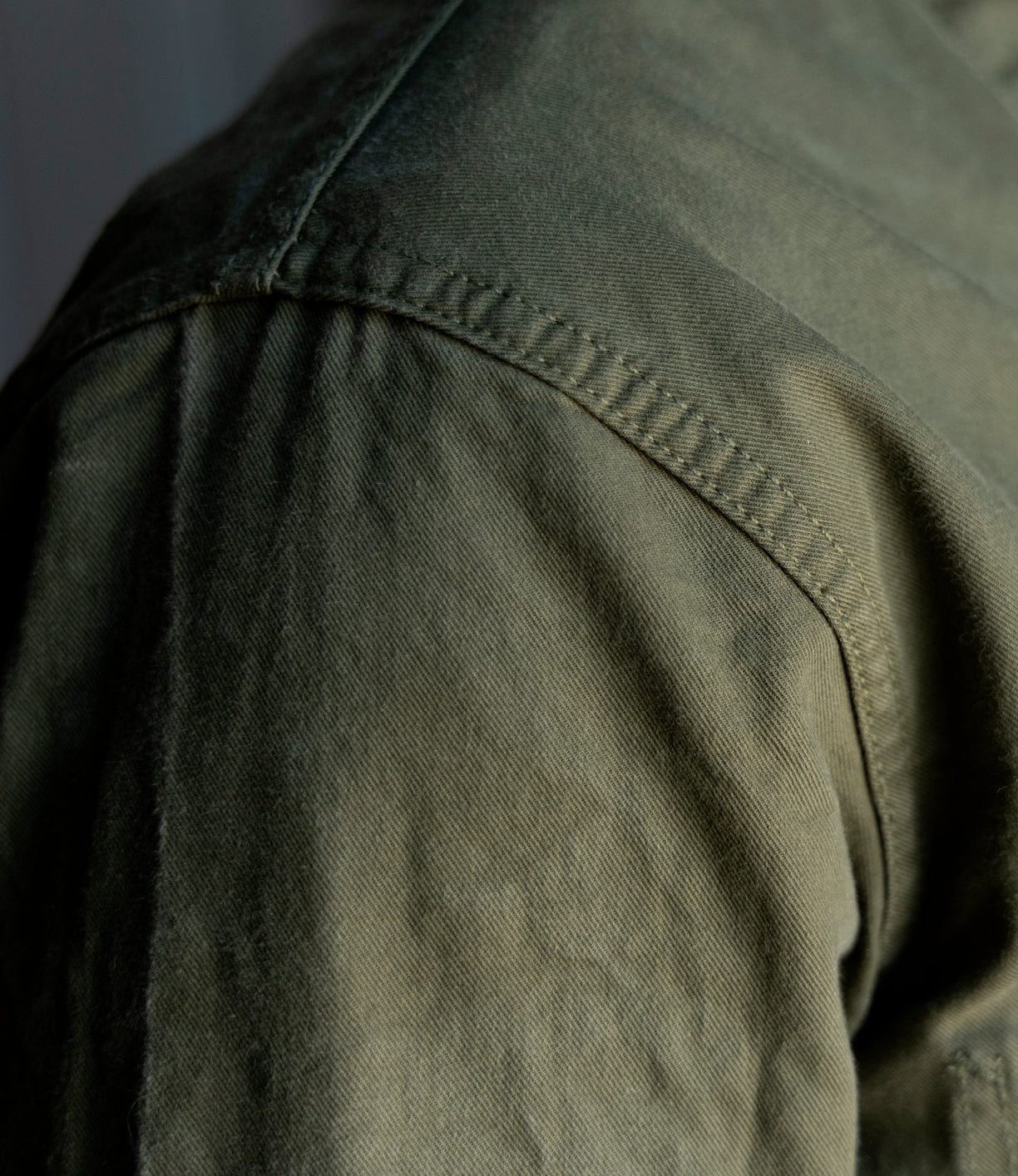


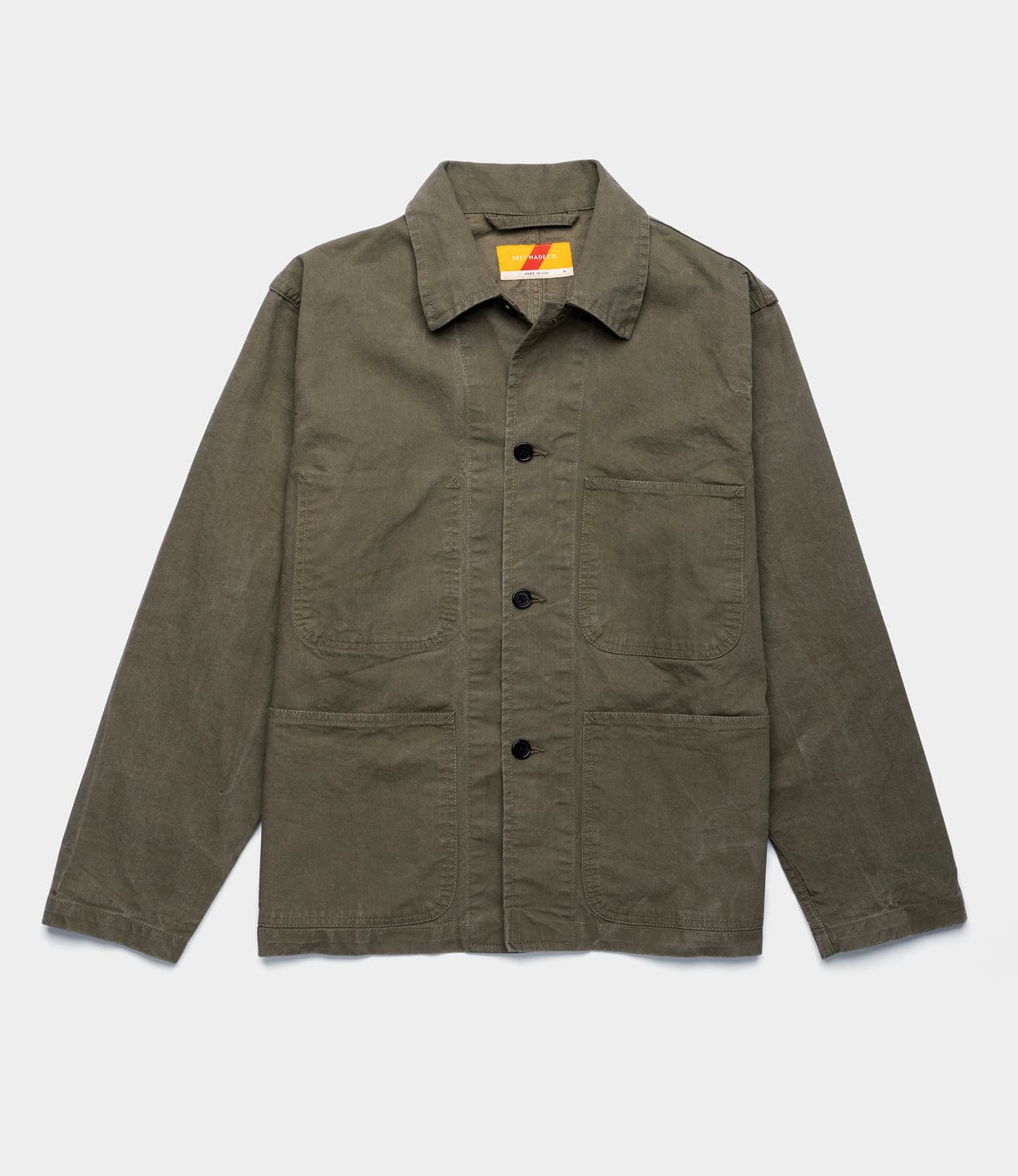
The origins of the fabric in our Service Jacket are in Fukuyama City. Here warp and weft yarns undergo sulphur yarn dyeing—a superior process that dyes individual yarns before weaving, rather than dyeing finished fabric. This traditional method creates deeper, more permanent color saturation that penetrates each fiber completely, unlike piece-dyeing which only coats the surface. The result is color that fades beautifully and evenly over time, developing rich patina. The slightly higher twist applied to the warp yarns emphasizes the twill weave, giving the fabric its enhanced durability.
The finished yarn is woven in Ibara City, Okayama Prefecture, at a mill built in 1949 during Japan's post-war reconstruction. This region has earned its reputation as the epicenter of premium denim and cotton fabric production. Our fabric is woven on air jet looms, which enable both high-speed production and the stable, high-density weave essential for durability.
The P-41 emerged in 1941 as the U.S. Marine Corps sought a practical field uniform to replace earlier designs. Built for the Pacific theater, it needed to withstand tropical humidity and rugged use while allowing freedom of movement in combat conditions. The simple four-pocket design, reinforced stitching, and tall collar became defining features—functional elements born from actual field requirements. After proving itself through the island campaigns of World War II, the P-41's utilitarian design influenced American workwear for decades, becoming a template for jackets that prioritize durability and utility.
The finished yarn is woven in Ibara City, Okayama Prefecture, at a mill built in 1949 during Japan's post-war reconstruction. This region has earned its reputation as the epicenter of premium denim and cotton fabric production. Our fabric is woven on air jet looms, which enable both high-speed production and the stable, high-density weave essential for durability.
The P-41 emerged in 1941 as the U.S. Marine Corps sought a practical field uniform to replace earlier designs. Built for the Pacific theater, it needed to withstand tropical humidity and rugged use while allowing freedom of movement in combat conditions. The simple four-pocket design, reinforced stitching, and tall collar became defining features—functional elements born from actual field requirements. After proving itself through the island campaigns of World War II, the P-41's utilitarian design influenced American workwear for decades, becoming a template for jackets that prioritize durability and utility.
- 100% cotton sulfur yarn dyed Japanese twill
- natural corozo buttons
- natural corozo buttons
Made in the USA








